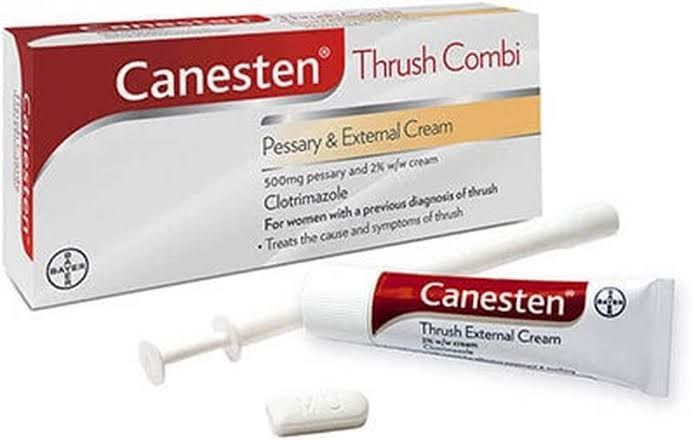Bentonite Clay Benefits
When volcanic ash reacts with seawater, it absorbs its minerals and forms bentonite clay. This clay has no taste or odor, and its color can vary from light (cream, yellow, green) to darker (brown, black) tones depending on its purity. Its consistency is very soft and does not stain. Bentonite clay got its name from the largest resource in the world, Fort Benton, Wyoming. Its name, whose main component is montmorillonite, derives from the place where it was first discovered (Montmorillon, France). The largest producer of this clay is the USA and it is China, Greece and India.
Both internal and external ashes have been used for health throughout human history. While eating a clay in particular may seem surprising, scientists think that geophagia or soil eating is an adaptive behavior for getting nutrients from the soil and eliminating intestinal parasites and toxins.. Traditionally bentonite and other clays are edible and can be applied on skin and hair. Some health It can be used to improve health in problems. We can list the areas where it is used as follows:
- Nutrient deficiencies
- Poisoning
- Infections
- Diarrhea and other digestive problems
- Skin irritation
- Hair cleaning and smoothing
Well; What makes bentonite clay different from similar clays like kaolin clay?
Kaolin Clay and Bentonite Clay
Kaolin is a clay with a composition similar to bentonite. However, kaolin has a different chemical structure that reduces the water and electrolyte holding capacity. Both clays are common ingredients in face masks, but they have different effects. Since bentonite has better absorbency, it can remove more oil and toxins from the skin. In contrast, kaolin is more effective at exfoliating dead skin due to its larger particles. People with oily skin do better with bentonite masks, while those with drier, more sensitive skin should choose kaolin. Studies suggest that clays absorb toxins from the skin and reduce the harmful effects of pollution on the skin.
Bentonite Clay Components and Function
Montmorillonite Clay
The main component is montmorillonite, a soft clay composed of silica and alumina layers. Montmorillonite is normally bound to many clay minerals, especially sodium, calcium, magnesium and aluminum. Bentonite may also contain small amounts of other substances such as other clays (illite, kaolinite) and crystalline silica (quartz, cristobalite). While these levels typically found in this clay are not dangerous, both kaolin and crystalline silica powder can cause lung disease if inhaled in large amounts. Silica powder is also linked to autoimmune disorders, kidney damage, and cancer. The negative charge of Montmorillonite causes the effects of bentonite clay and, like a magnet, attracts and binds (adsorbs) positively charged molecules to its surface. In this way, it can catch many heavy metals and toxins, preventing them from entering the body. Montmorillonite particles have a surprisingly large surface area, giving them a high capacity to bind toxins. The particles also absorb water with toxins, infusing it into the spaces between its layers and causing the entire clay to swell.
Bentonite Clay Drug Delivery System
Bentonite clay can be changed to synthetic materials (polymers). They can be used as drug delivery and slow release drug systems developed for. The systems it is used in can be listed as follows:
- Cancer (such as doxorubicin, paclitaxel, and tamoxifen)
- Infections (ciprofloxacin, curcumin, praziquantel)
- Sun protection (Eusolex, NeoHeliopan, zinc and titanium oxides)
- Glaucoma (betaxolol)
- Psychiatric disorders (olanzapine)
- Impotence (sildenafil)
Also in the case of sildenafil, bentonite clay also helps mask the unpleasant taste.
How is Bentonite Clay Prepared for Use?
 Bentonite clay is normally available as a clay powder. A paste is prepared by adding water until the desired yogurt-like consistency is obtained and it is made ready for use. In order to make sure that the clay is not diluted too much while making this preparation, water should be added to the powder gradually and the clay should be wetted. Bentonite clay can react with metal objects and lose its effectiveness, but there are no studies to confirm this claim. To use it safely, consumers and manufacturers are often recommended to use ceramic, glass bowls, and plastic or wooden spoons.
Bentonite clay is normally available as a clay powder. A paste is prepared by adding water until the desired yogurt-like consistency is obtained and it is made ready for use. In order to make sure that the clay is not diluted too much while making this preparation, water should be added to the powder gradually and the clay should be wetted. Bentonite clay can react with metal objects and lose its effectiveness, but there are no studies to confirm this claim. To use it safely, consumers and manufacturers are often recommended to use ceramic, glass bowls, and plastic or wooden spoons.
How is Bentonite Clay Used?
- Soothing skin paste: Bentonite clay paste prepared for burns, bites and rashes is applied and left on the skin until it dries.
- Face mask: The prepared paste is applied to the face and left on the skin for 10-20 minutes.
- Hair mask: The prepared paste is applied to the hair 1-2 times a week. In fact, a little apple cider vinegar can be added to the water for a stronger effect, or a few drops of hair nourishing vegetable oils can be mixed into the paste.
- Armpit detox: The prepared paste is applied to the armpits to get rid of toxins.
- Skin softening bath: Bentonite clay is added to the bath water to soften the skin and get rid of settled skin toxins.
- Homemade soap making: Bentonite clay and oils can be combined with lye in soap making for oily skin.
- Toothbrushing powder making: It can be cleaned with bentonite clay to remineralize teeth, whiten and kill bacteria.
And ready-to-use bentonite clay versions of most DIY remedies can be purchased if desired. The FDA has not approved bentonite clay for any topical use. Before using this clay (or any natural remedy) on the skin, a skin test for allergies should be done. It should be applied in a small amount to a part of the skin, wait 24 hours and if any reaction occurs, the product should not be continued.
Potable Bentonite Clay
Bentonite clay aYou can also take bentonite clay by mouth to remove toxins and aid digestion. Bentonite clay is generally accepted by the FDA to be safe as food (GRAS) status, but has not been approved under any circumstances. Users and manufacturers have set unofficial doses. As a general rule, 0.5-1 teaspoon of bentonite clay should be dissolved in 1 cup of water and drunk once a day. In most clinical studies, subjects have used up to 3 g per day. However, making sure that the clay to be used is a food grade clay is important for its safe use. Bentonite clay supplements are also available in the form of tablets and capsules. 
Finally, bentonite can be mixed with clay with water and given to pets to cure digestive problems or poisoning, and the dose can vary depending on the size of the animal. However, consulting a qualified veterinarian is recommended before giving bentonite clay to pets.
Side Effects and Cautions
Bentonite clay (1.5-3 g / day) is relatively safe and caused only mild digestive symptoms (bloating, stomach pain, bloating, constipation, diarrhea) in less than 10% of people taking it for 2 weeks. Half of this dose did not cause any side effects in children. It did not reduce mineral and vitamin intake in both adults and children. In contrast, excessive oral doses may result in nutrient deficiencies. A 3-year-old girl given adult doses and a cat eating a litter containing this clay developed severe potassium deficiency with vomiting, constipation, sleepiness and weakness. Similarly, topical bentonite clay produced generally safe results in clinical studies. Only one person developed mild, temporary skin redness from bentonite clay lotion.
High exposure to bentonite clay dust from mines and steel plants has been associated with an increased incidence of respiratory diseases and cell damage in several studies. However, it may have contributed to these effects when potentially non-toxic (quartz, kaolin, perlite). A dental assistant suffered from severe corneal inflammation with complaints of low vision and photosensitivity after a dental polishing paste with bentonite clay came into contact with the eye. Bentonite clay did not reduce mineral intake or use in pregnant rats, although its use during pregnancy or lactation has not been studied in women.
Bentonite Clay and Drug Interactions
Bentonite clay can bind to some drugs, especially positively charged drugs, and prevent it from being carried into the bloodstream. Some of these medications are:
- Antibiotics (such as tetracycline, trimethoprim and rifampicin)
- Medicines used for heart disease (digoxin, quinidine)
- Antiallergic drugs (promethazine, chlorpheniramine)
- Stimulants (caffeine, amphetamine)
- Medicines for psychiatric disorders (lithium)
- Medicines for respiratory diseases (theophylline)
- Sedatives (propoxyphene)
- Antidiabetic drugs (metformin)
If it takes medication, it is recommended to consult a specialist doctor before using bentonite clay internally.
Dikkat: Sitemiz herkese açık bir platform olduğundan, çox fazla kişi paylaşım yapmaktadır. Sitenizden izinsiz paylaşım yapılması durumunda iletişim bölümünden bildirmeniz yeterlidir.
Source link



